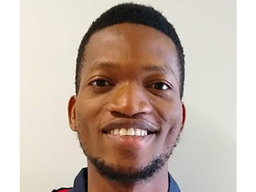PhD Proposal: Adeleke Segun Ademakinwa
Location
Physics : 401
Date & Time
April 26, 2022, 2:00 pm – 4:00 pm
Description
ADVISOR: Dr. Zhibo Zhang
TITLE: Can biased cloud retrievals due to 3-D effects provide reasonable radiative energy estimates? A closure study based on Satellite Observations and Radiative Transfer Simulations
ABSTRACT:The Earth’s weather and climate are being driven by radiative energy from which the primary source is the Sun. Clouds play an important role in reallocating this radiative energy from the sun as well as the thermal energy emitted from the earth and surrounding atmosphere. These roles of clouds on the Earth’s radiative energy budget are vital in the climate system, affecting the radiative fluxes at both the top of the atmosphere (TOA) and at the surface. To get a better understanding of our weather and climate changes, it is essential to consider uncertainties in climate data records on clouds and radiative fluxes derived from long-term passive satellite observations. Remotely retrieved cloud properties, such as cloud optical thickness (COT) and cloud effective radius (CER) based on satellite observations are often used to derive the radiative effects of clouds. However, such retrievals are based on the 1-D radiative transfer (RT) theory which uses approximations that neglect the horizontal movement of radiation in cloud fields and in many circumstances can result in large biases due to the so-called 3D effect. On the other hand, cloud retrieval based on the 3-D RT theory is still in its infancy and far from being used in operational algorithms. In such a dilemma situation, a question becomes highly important: Can biased cloud retrievals due to 3-D effects provide reasonable radiative energy estimates? To investigate this question and expand our knowledge on the 3-D effects to help us understand how the 3-D effects affect the radiative energy estimates, we propose a study where will first study the 3-D effects on the observed radiance and investigate how solar geometry and optical properties of the surface affect it. Then we will investigate the impact of the 3- D effects on retrieved cloud properties like the CER and the COT. Lastly, the need for a broadband flux calculation is needed to compute the broadband radiative fluxes and heating rate, thus an inhouse broadband RT-model was coupled and will be used to study the impact of the 3-D effects on radiative energy and derive estimates to quantify the 3-D effects on radiative energy.
TITLE: Can biased cloud retrievals due to 3-D effects provide reasonable radiative energy estimates? A closure study based on Satellite Observations and Radiative Transfer Simulations
ABSTRACT:The Earth’s weather and climate are being driven by radiative energy from which the primary source is the Sun. Clouds play an important role in reallocating this radiative energy from the sun as well as the thermal energy emitted from the earth and surrounding atmosphere. These roles of clouds on the Earth’s radiative energy budget are vital in the climate system, affecting the radiative fluxes at both the top of the atmosphere (TOA) and at the surface. To get a better understanding of our weather and climate changes, it is essential to consider uncertainties in climate data records on clouds and radiative fluxes derived from long-term passive satellite observations. Remotely retrieved cloud properties, such as cloud optical thickness (COT) and cloud effective radius (CER) based on satellite observations are often used to derive the radiative effects of clouds. However, such retrievals are based on the 1-D radiative transfer (RT) theory which uses approximations that neglect the horizontal movement of radiation in cloud fields and in many circumstances can result in large biases due to the so-called 3D effect. On the other hand, cloud retrieval based on the 3-D RT theory is still in its infancy and far from being used in operational algorithms. In such a dilemma situation, a question becomes highly important: Can biased cloud retrievals due to 3-D effects provide reasonable radiative energy estimates? To investigate this question and expand our knowledge on the 3-D effects to help us understand how the 3-D effects affect the radiative energy estimates, we propose a study where will first study the 3-D effects on the observed radiance and investigate how solar geometry and optical properties of the surface affect it. Then we will investigate the impact of the 3- D effects on retrieved cloud properties like the CER and the COT. Lastly, the need for a broadband flux calculation is needed to compute the broadband radiative fluxes and heating rate, thus an inhouse broadband RT-model was coupled and will be used to study the impact of the 3-D effects on radiative energy and derive estimates to quantify the 3-D effects on radiative energy.
